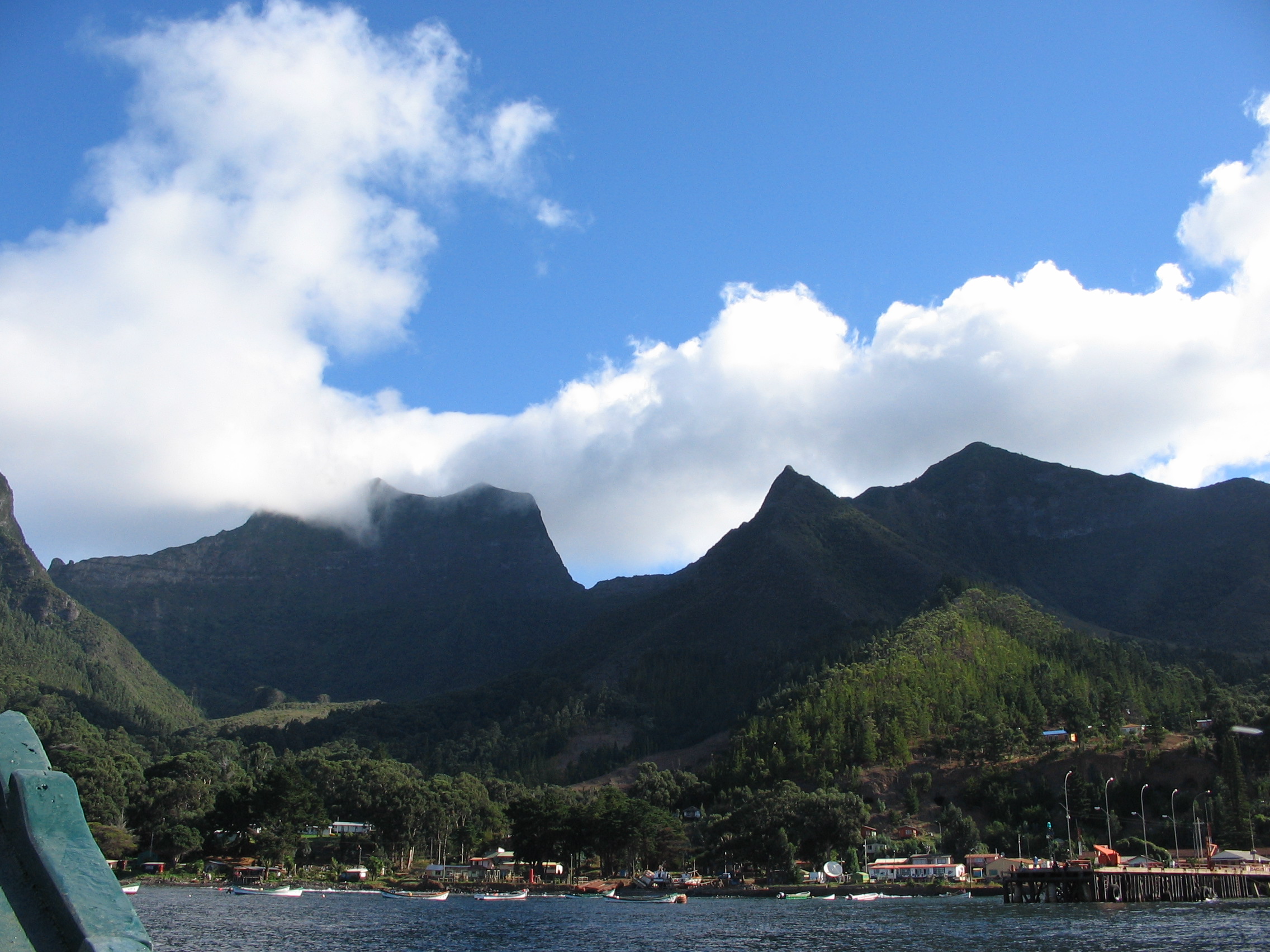
Juan Fernández Islands
The Juan Fernández Islands (Spanish: Archipiélago Juan Fernández) are a sparsely inhabited series of islands in the South Pacific Ocean reliant on tourism and fishing. Situated 670 km (362 nmi; 416 mi) off the coast of Chile, they are composed of three main volcanic islands: Robinson Crusoe, Alejandro Selkirk and Santa Clara. The group is part of Insular Chile.
This article is about the Chilean archipelago. For other uses, see Juan Fernández.
Juan Fernández Islands
Archipiélago Juan Fernández
22 November 1574
1895
21 September 1979
30 July 2007
Pablo Andrés Manríquez Angulo (Ind.)
99.6 km2 (38.5 sq mi)
1,268 m (4,160 ft)
900
9.0/km2 (23/sq mi)
800
100
536
364
56
The islands are primarily known for having been the home to the marooned sailor Alexander Selkirk for more than four years from 1704, which may have inspired English writer Daniel Defoe's Robinson Crusoe.[6] Most of the archipelago's present-day inhabitants reside on Robinson Crusoe Island, and mainly in the capital, San Juan Bautista, located at Cumberland Bay on the island's north coast.[7]
The group of islands is part of Chile's Valparaíso Region (which also includes Easter Island) and, along with the Desventuradas Islands, forms one of the nine communes of Valparaíso Province. The islands are named after Juan Fernández, the explorer who discovered them in the 1570s.
Alejandro Selkirk is the largest of the Juan Fernández Islands at 49.5 km2 (19.1 sq mi), and its highest peak, Cerro de Los Inocentes, is also the highest point of the archipelago at 1,268 m (4,160 ft). The island's population was 57 in 2012. Robinson Crusoe is the second largest island in the archipelago at 47.9 km2 (18 sq mi); its highest peak, El Yunque, is 915 m (3,002 ft). The population of Robinson Crusoe was 843 in 2012. Santa Clara is 2.2 km2 (0.8 sq mi) in area and reaches a height of 375 m (1,230 ft). Santa Clara is uninhabited.[8] The maximum elevations of Juan Fernández, 915 m (3,002 ft) for Robinson Crusoe and 1,329 m (4,360 ft) for Alejandro Selkirk, respectively, are high enough to cause the phenomenon known as Kármán vortex street, which can be seen from space.
The islands are volcanic in origin, produced by the movement of the Nazca Plate over the Juan Fernández hotspot. As the plate moved eastward over the hot spot, volcanic eruptions formed the Juan Fernández Ridge before being subducted under the South American continent at the Peru–Chile Trench. The islands occur where the peaks of the submarine ridge have protruded above sea level. Radiometric dating indicates that Santa Clara is the oldest of the islands, at 5.8 million years old, followed by Robinson Crusoe, 3.8 – 4.2 million years old, and Alexander Selkirk, 1.0 – 2.4 million years old.
The seafloor around Juan Fernández Islands is rich in Manganese–Iron nodules, which might be of potential economic interest.[9]
Some consider the islands to be one of the easternmost points of Oceania, rather than an outlying region of South America.[10][11] In their book Shore Fishes of Easter Island, authors John E. Randall and Alfredo Cea Egana claim that the Juan Fernández Islands have "great similarity in ichthyofauna with Oceania more so than with the nearing South America."[12]
History[edit]
Prehistory[edit]
A 2008 report by archaeologists from the Australian National University states that, "a combination of palaeoecology and archaeology in the Juan Fernández Islands showed it was unlikely there had been human activity in the islands before Europeans arrived."[19] Ichthyologists Ingo Hahn and Uwe Römer wrote in 2002, "the geographically isolated Juan Fernández Islands were probably untouched by man until their discovery by European sailors in 1574. Polynesians did not reach further east than Easter Island and native Americans perhaps not west of the South American continent."[20]
Government[edit]
As a commune, the Juan Fernández Islands are a third-level administrative division of Chile governed by a municipal council, headed by a mayor (Spanish: alcalde) who is directly elected every four years. The current mayor for the term 2021–2024 is Pablo Andrés Manríquez Angulo.
Within the electoral divisions of Chile, the commune was represented in the Chamber of Deputies by Joaquín Godoy (RN) and Aldo Cornejo (PDC) as part of the 13th electoral district, together with Valparaíso and Easter Island. It was represented in the Senate by Francisco Chahuán Chahuán (RN) and Ricardo Lagos Weber (PPD) as part of the 6th senatorial constituency (Valparaíso-Coast).
Travel[edit]
The islands are served by Robinson Crusoe Airfield, located on Robinson Crusoe Island.


